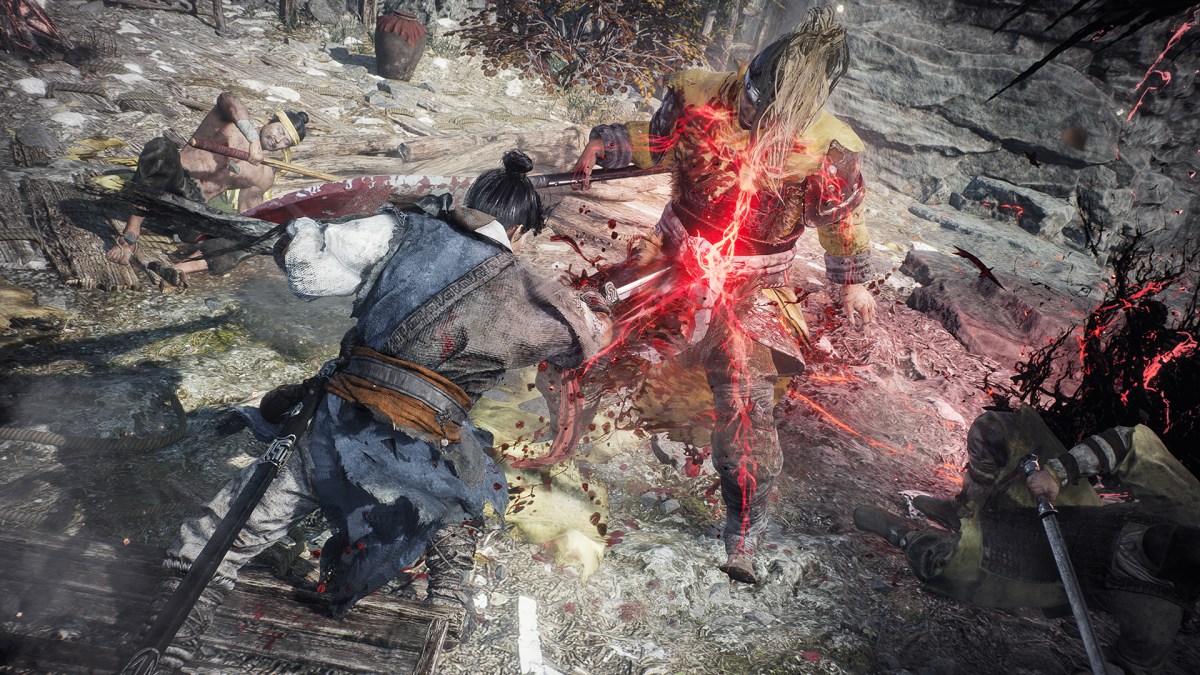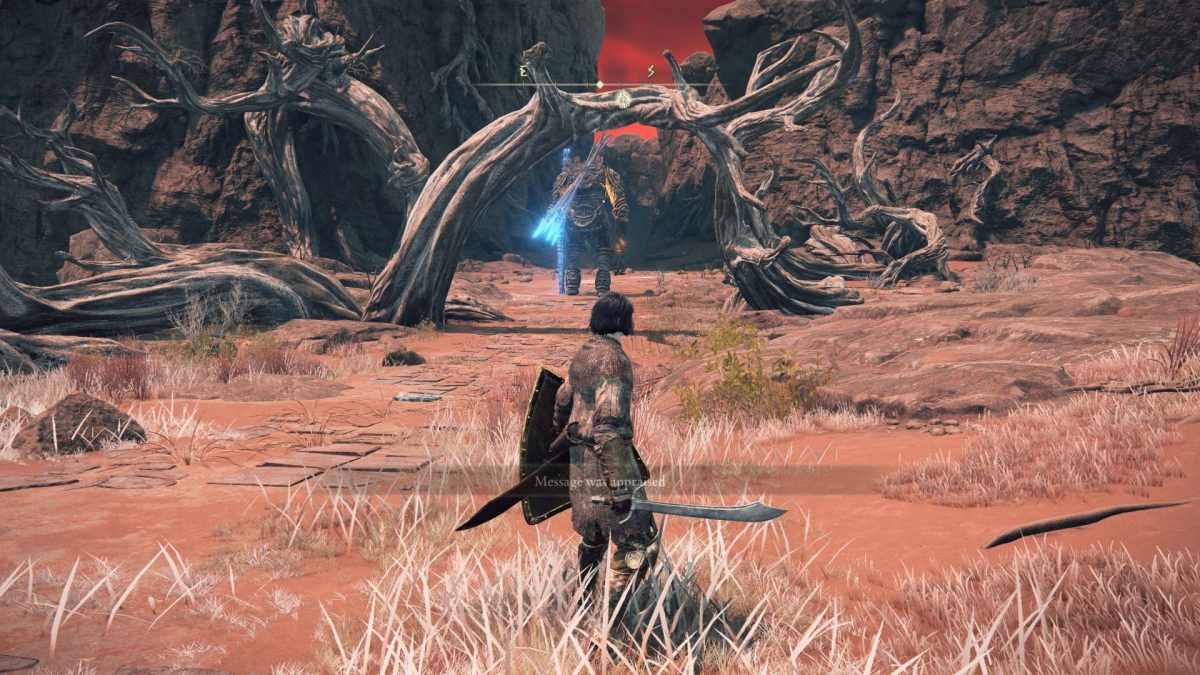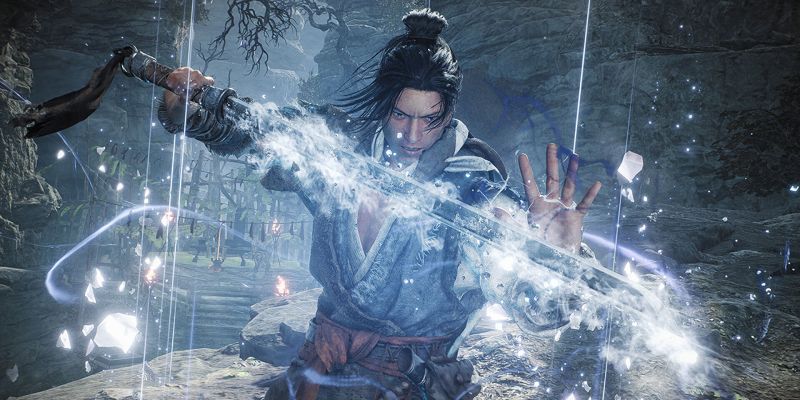Throughout the past year, I’ve pondered why Elden Ring didn’t connect with me in the way it has for so many others. For a while, I thought it was maybe that it lacked the allegorical resonance that Demon’s Souls had. Or maybe it was the absence of a clear narrative impulse — though that would be an odd thing to ask of almost any Soulslike. As I found myself enjoying the janky, low-rent Thymesia and Steelrising more than FromSoftware’s opus, I still couldn’t place it. But finally, in Wo Long: Fallen Dynasty, I think I’ve found an answer.
Although several factors play into it, they all boil down to a sense of mastery over the game environment. A large part of that is the linearity of Wo Long. It has discrete levels with a limited number of paths to take from beginning to end. The design is archetypal of the genre and, compared to that of Elden Ring, unsophisticated. Often, that word brings negative connotations — I usually associate it with other words like “slovenly” or “basic,” depending on the context — but I consider it a strength on this occasion.
Judging by the critical response, it’s fair to say that Elden Ring’s open world is one of the best in gaming history. It will very likely herald a paradigm shift in Soulslike design in the coming years as other developers study and replicate it. Even so, despite all the accolades and acclaim, it couldn’t grab me. For me, the world design was at odds with the game design: the promise of endless beauty and wonder locked away behind boundless hostility. The antagonistic atmosphere of the Lands Between was only amplified by the sophistication of its design.
Backtracking and repetition are part of the Soulslike’s core gameplay loop — except it’s repetition with variation. Each new bonfire or battle flag is a new spawn point. They enable you to traverse the landscape in reverse, opening up many more opportunities to dispatch foes through stealth. Like many of these games, much of Wo Long is designed to provoke forward-facing difficulty. Enemy paths and awarenesses are tuned for when you’re first making your way through a level. Backtracking, then, feels like you’re circumventing the systems. It’s not an easy mode, but it is easier and no less satisfying.

In fact, it may be the single most compelling thing about Wo Long. Going forward can feel like bashing your head against a wall. Even if you do memorize enemy placements and attack patterns, there’s always the “what if” possibility of getting your timing wrong or not reacting quickly enough. Mistakes often make for swift deaths. Going backwards, though, is a much simpler way to achieve mastery over the domain. Enemies fall to unseen blades; you become an agent of destruction, a harbinger of death.
And that brings the conversation back to Elden Ring. There’s less intrinsic repetition in exploration in that game. You don’t always need to take Path A from Point A to Point B. Instead, you can ignore outposts entirely, bypass groups of enemies, and go off the beaten track to find your own way forwards or sideways or any which way you please.
I’ve never loved open-world games as many others do, but I generally appreciate their freedoms: to run away from tough fights, to doddle about in lavish environments, to take my time. In Elden Ring, I found it counterintuitive because there was no reprieve. Everywhere I went, it was to fight or flee. More often than not, it was the latter. The open world means that, compared to its predecessors and Wo Long, you need to be more alert, more aware of your surroundings. Enemies can be anywhere at any time; they are the unseen blades — and often the seen blades — who can overwhelm with sheer force. They don’t need to be hidden in the nooks and crannies, crouching in underpasses or dangling from architraves because they can hide in plain sight. The design is fantastic because it wholeheartedly leans into and even amplifies the hostility inherent in the Soulslike genre.

So, I understand why people who enjoy the genre love Elden Ring, but I don’t share those sentiments. For me, the best part of the genre is in mastering the distinct locales. It’s learning enemy patterns and placements to make it through, unlocking the next checkpoint, then working backwards through the throngs to acquire more Souls or Genuine Qi using stealth, backstabs, and critical hits on NPCs that are looking the other way because the enemy placements aren’t designed for backtracking.
What’s great about Wo Long is that it rewards that play style through the Morale system. Killing enemies increases your morale level, which boosts your strength. And if it’s easier to kill enemies by going back through the levels, then it, in turn, makes the more onerous task of going forwards easier. Maybe that’s not actual mastery over the levels but instead just gaming the systems.
Either way, it’s a feeling that was lacking in Elden Ring. At no point in my (relatively few) hours in the Lands Between did I feel that I had control over a location, a consistent ability to clear an outpost by taking advantage of blind spots. And maybe Elden Ring just isn’t designed for that stealth-oriented play style. Yet, considering it’s an RPG — quite possibly the most widely acclaimed RPG since Skyrim — it lingers in my mind as a bugbear.
Maybe now, having finally identified a clear gameplay reason for my dissatisfaction with Elden Ring, I will be able to revisit it and have a different experience. Or maybe not. For now, at least, I’m content with bashing my way through Wo Long: Fallen Dynasty, relieved that, at least in the ways that matter to me, it’s more satisfying than Elden Ring.
